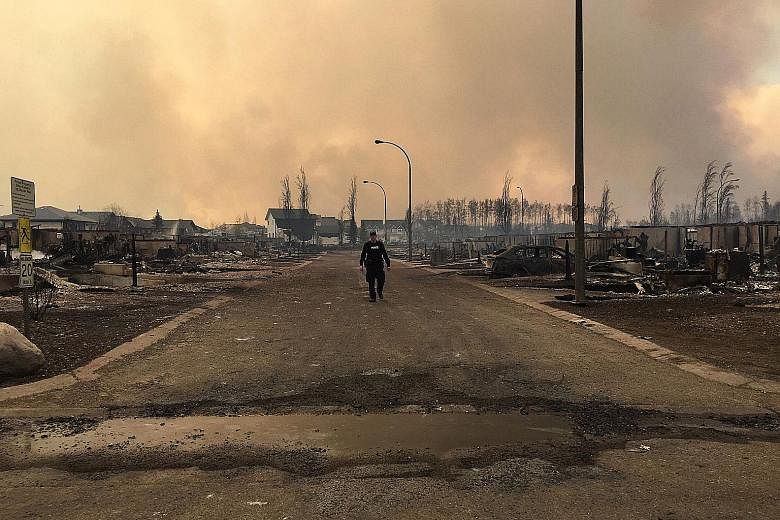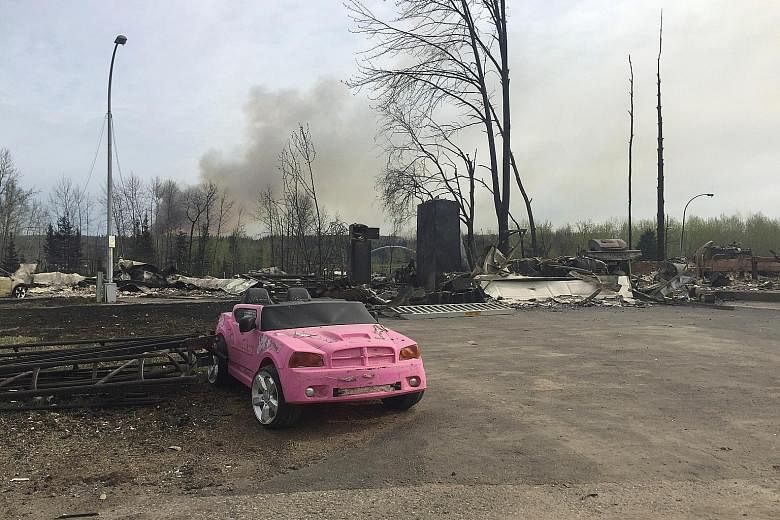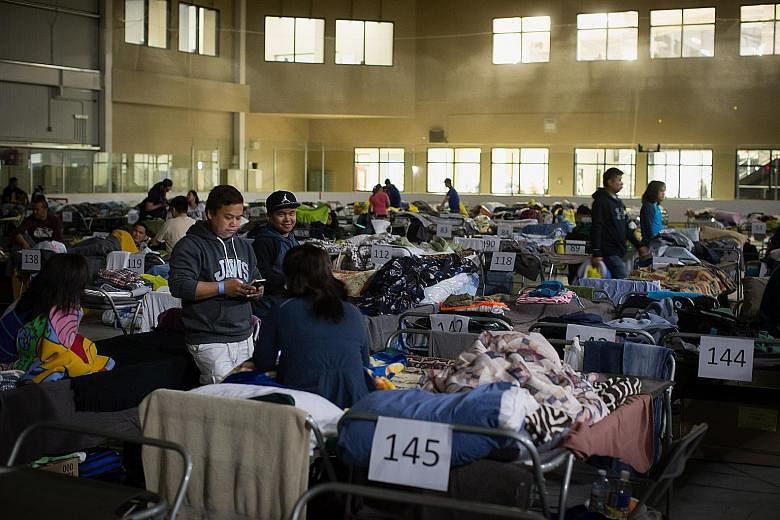FORT MCMURRAY (Alberta) - Canada has begun airlifting to safety up to 25,000 people from Fort McMurray whose homes in the oil sands region are threatened by raging fires.
Some 4,000 people who fled to the north of the city were airlifted, using government and oil industry aircraft, to Edmonton and Calgary on Thursday, said Alberta Premier Rachel Notley. The hope was to airlift 8,000 by the end of the day.
"And we are doing everything we can to open the highways so we can get fuel up there and then get those folks moving," she added.
The catastrophic wildfires that have forced 88,000 residents to flee the city in Alberta province exploded tenfold in size on Thursday, cutting off evacuees in camps north of the city and putting communities to the south in extreme danger.
The blaze that erupted on Sunday grew from 7,500ha on Wednesday to some 85,000ha on Thursday, an area roughly 10 times the size of New York's Manhattan Island.
The area includes 12,000ha surrounding Fort McMurray, the epicentre of the inferno, where 2,000 homes have been destroyed.

The evacuees had taken refuge in work camps normally used by oil sands workers. But some camps quickly became overcrowded. The combination of the camps being cut off and the possibility that the fires could swing their way led to the airlift, which will last for days.
But not all evacuees had flights to safety. The Canadian Broadcasting Corp said thousands of cars were lined up behind a blockade north of Fort McMurray on Thursday. And as frustration mounted, more than two dozen vehicles tried to force their way through police cars acting as barriers but stopped when at least one police officer stood in front of his cruiser.
TV footage from the centre of the disaster zone showed trees ablaze on the edge of highways crowded with bumper-to-bumper traffic trying to leave as billowing black smoke darkened the sky. Bright orange embers whizzed through the air and floated down onto cars.
"The footage we've seen, the cars racing down highways while fire rages on all sides, is nothing short of terrifying," Prime Minister Justin Trudeau told lawmakers in Ottawa.
The wildfires also knocked out up to a third of Canada's daily crude capacity and closed some pipelines. Oil companies crucial to the region such as Suncor, Syncrude and Shell have pulled out non-essential staff and set up emergency shelters.
All three major firms have slashed their output - with Suncor shutting down its main production site north of Fort McMurray, and Shell Canada stopping production at its Albian site, with an output of 255,000 barrels per day (bpd).
The closures amount to 690,000 bpd from Canada's total oil sands output of 2.2 million bpd.
And some questions being asked are what will replace the ashes of Fort McMurray and what to do with the displaced.
While the evacuees' arrival in Edmonton brought them to safety, it only reinforced the uncertainty they now face having fled a city where much has been reduced to ashes. "It's just surreal, I don't know what to do," Ms Lory Curnew said.
She, like many evacuees, is sceptical about promises from politicians that Fort McMurray will rise again. "For a lot of people, I don't think they'll go back," said Ms Curnew, a single mother. "You just can't go back there with no services, no food coming in, no anything."
Lawmaker Rona Ambrose, who represents the affected region, vowed in Parliament that it would recover from the disaster. "It's a tough day for Albertans but we will persevere," she said through tears.
But Ms Notley said the evacuees face a long wait to return home. "The damage to the community of Fort McMurray is extensive and the city is not safe for residents," she said. "It is simply not possible, nor is it responsible to speculate on a time when citizens will be able to return. We do know that it will not be a matter of days."
It is already difficult to foresee that a city of about 90,000 people that struggled with explosive growth earlier in this decade will emerge in the same form.
AGENCE FRANCE-PRESSE, NEW YORK TIMES, REUTERS



